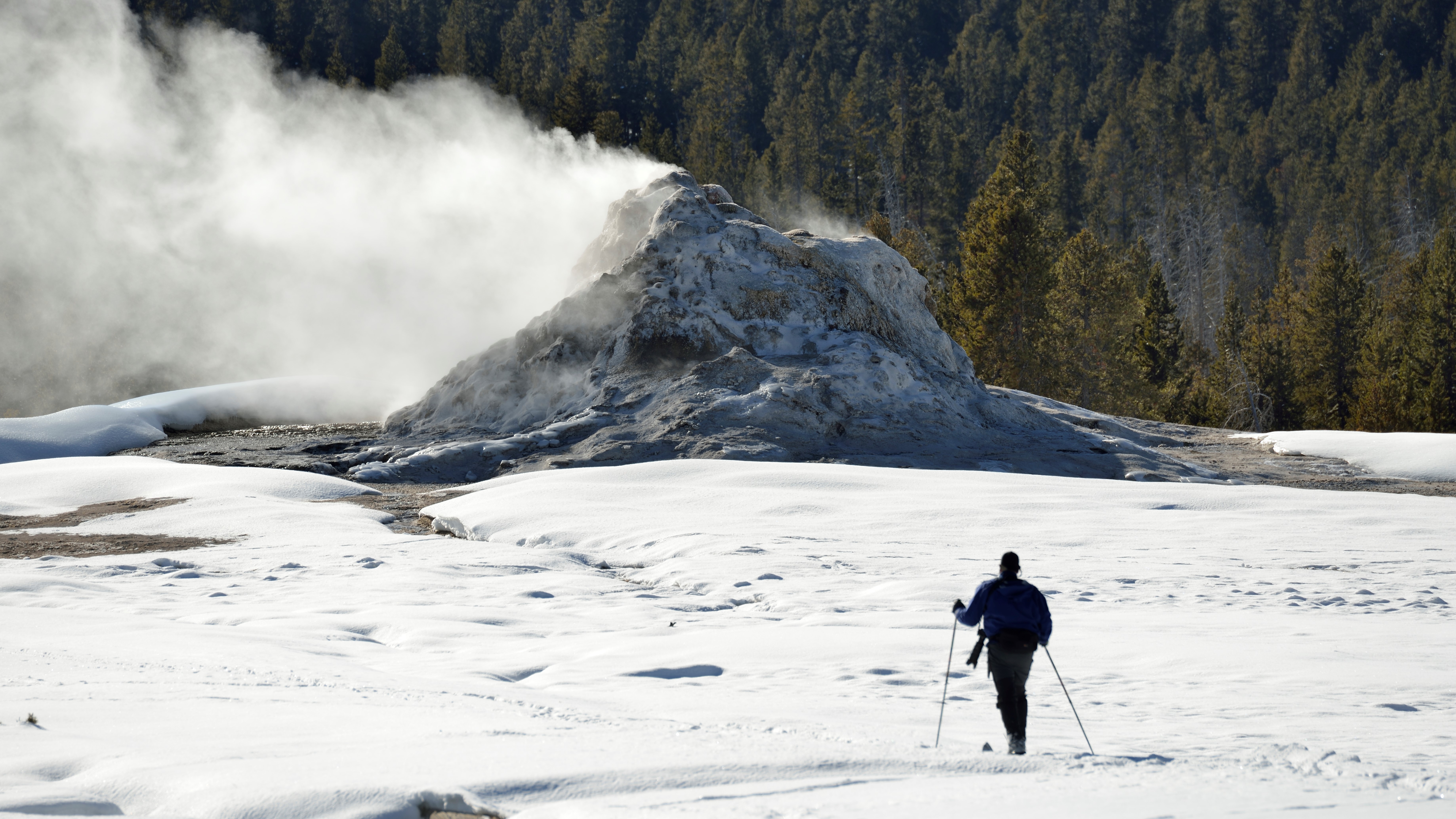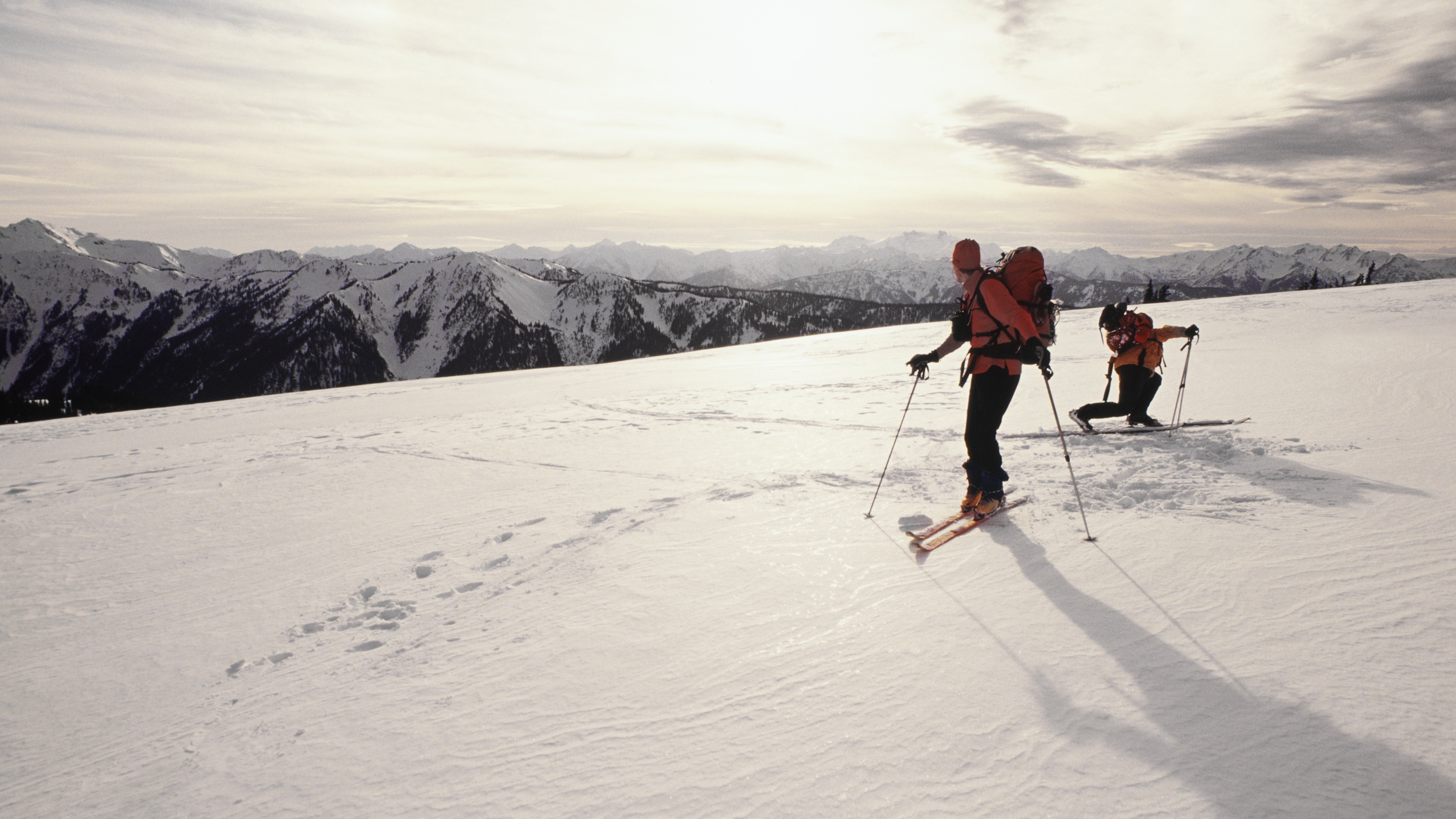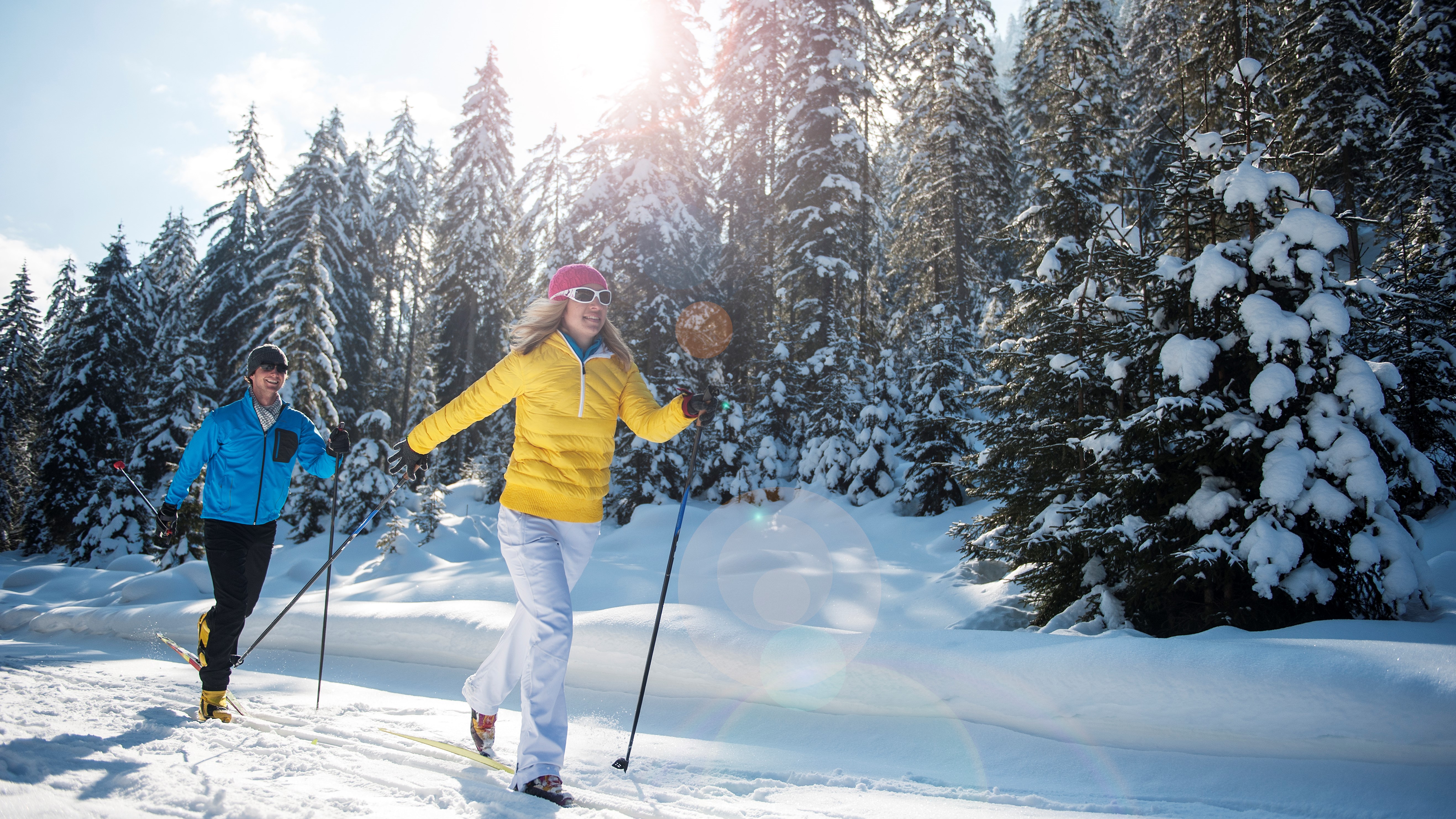What is Nordic skiing?
What is Nordic skiing? Is it different from cross country skiing? We clear up the confusion around these two terms

Are you one of the lucky ones who's seen a lot of snow this year? If so, you might be looking for different ways to explore it away from the ski resorts and crowds, but if you didn’t grow up cross country skiing, you may be a bit baffled by all the new terms and possibilities when it comes to the type of skiing you might want to do. One of the most frequent questions we see is, what is Nordic skiing? And how is it different from cross country skiing? So, we’re here to clear up any confusion and get you out cruising in the white stuff before the weather warms up and you have to pull your trail running shoes back out.

What is Nordic skiing?
In short, Nordic skiing is another term for cross country skiing – the two terms are synonymous and both describe skiing where you provide your own locomotion to propel you forward, rather than relying on slopes and gravity. Why Nordic? Well, though the original skis were probably devised about 10,000 years ago in northern China, and humans have been using skiing as a mode of transportation since then, most of the modern history of skiing originates in Norway.
The Norwegian army was known to perform skills tests that involved downhill skiing in the 1800s, and a military officer named Olaf Rye was thought to be the first ski jumper with an impressive 31-foot jump back in 1809. In those early days, all skiing involved long, skinny wooden skis that you could use to ski across country as well as downhill, though rather clumsily by today’s standards. The toe of your leather ski boots would be attached to your skis via the bindings, but your heel would be free to allow you to glide and hike in your skis. Soon, however, the Norwegians also contributed to the history of skiing with the advent of camber on skis, which allowed skiers to find their edges and turn and stop more easily.

Presumably, this type of skiing was all just called “skiing” until alpine skiing came along, with alpine bindings which secured your heel for easier downhill travel and the first ski lift in 1936 at Sun Valley, Idaho, all of which necessitated the need for a distinction. Hence, these days, when you go skiing across country with your heel free rather than alpine skiing, it is sometimes referred to as Nordic skiing. Unless it’s referred to as cross country skiing. We don’t know at what point people started referring to this type of skiing as “cross country,” but today, that term is used more commonly than Nordic, and all you really need to know is that they are one and the same.
Further, there are two techniques that fall under the umbrella terms of Nordic/cross country skiing – classic technique and skate skiing. If you are doing either of these techniques, you are Nordic skiing, or cross country skiing. Whichever term you prefer, really.
Just to complicate matters a little, you also sometimes hear the word “touring” used to describe cross country skiing in the backcountry, away from groomed tracks. This is confusing because “touring” can also apply to alpine touring, where you put skins on your skis to ski uphill with your heel free, then clip your heel in to switch to alpine skiing for the descent. If someone invites you to go ski touring, just make sure you have the right skis for what they mean.

What is the difference between Nordic skis and cross country skis?
Okay, so here things do get a little more complicated. Even though Nordic and cross country skiing are the same thing, the words do sometimes refer to different types of skis. If you are shopping for cross country skis and spot both terms being used, you can usually assume the ones called 'cross country skis' are skinny skis with no edges, which you can use for skiing on flat terrain, groomed tracks and for skate skiing. The ones labeled 'Nordic skis' will be a little wider and have metal edges, making them more suitable for crossing hilly terrain and getting into deeper snow. You could use Nordic skis on a groomed track, but you can’t very easily use cross country skis in deep snow and hill terrain. You’ll want metal edges for that.
All the latest inspiration, tips and guides to help you plan your next Advnture!
So there you have it. There's no difference between the types of skiing, there might be a difference the skis, and if you're unsure you should ask questions before you get a six-foot-long package delivered to your door that costs an arm and a leg to mail back.
- Best ski jackets: stay warm on your winter adventures
Julia Clarke is a staff writer for Advnture.com and the author of the book Restorative Yoga for Beginners. She loves to explore mountains on foot, bike, skis and belay and then recover on the the yoga mat. Julia graduated with a degree in journalism in 2004 and spent eight years working as a radio presenter in Kansas City, Vermont, Boston and New York City before discovering the joys of the Rocky Mountains. She then detoured west to Colorado and enjoyed 11 years teaching yoga in Vail before returning to her hometown of Glasgow, Scotland in 2020 to focus on family and writing.

